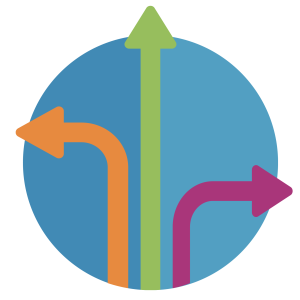Leaders at top-performing organizations recognize that advancing employee growth is vital to long-term success. Effective training serves to entice new hires, engage existing staff and propel business expansion.
Recent reports have revealed that skill gaps are widening. Companies are challenged to find qualified applicants given the increasing discrepancies in both soft skills as well as technical capabilities.
Technology continues to accelerate these shifts. Artificial intelligence (AI) is quickly changing the type of work that individuals are being asked to do and directly impacts the proficiencies people will need in the future.
Every organization should evaluate and enlist the resources necessary to build a comprehensive employee training and development program, creating motivating pathways for their people and keeping pace with workplace evolutions.

5 Core Contributors in Training and Development Programs
Creating a successful training and development program requires support from multiple players within the company – not just the Learning and Development (L&D) professionals.
To elevate employee training, establish a cross-functional team inclusive of L&D, Organizational Development (OD), Human Resources (HR), executives and managers. Each contributor plays an important role in the overall success of learning efforts. Click each section to learn more.
6 Essential Concepts of Employee Development
In addition to understanding the people who will be integral in advancing employee training and development, be mindful to take a holistic approach to workforce development and offer programming related to:
- Skills development
- Leadership & management development
- Team development
- Career development
- Individualized development
- Continuous learning
4 Principles to Design an Engaging Employee Training and Development Program
To establish an employee development program that engages the workforce and achieves results, best-in-class organizations attend to four concepts. Keep in mind – these elements are not point-in-time measures that teams can assess only once. As business performance evolves, targets adjust and employees grow, the development process must change as well.
Principle #1 – Align and Define Strategic Goals
In building and refining an employee training and development program, keep an eye toward the horizon. Examine the factors that will drive future performance and propel your business closer to its mission and vision. Evaluate the company’s professional development offerings against this future state to identify relevant programming for the organization and its workforce.
Clear communication from the top down ensures that executives and those responsible for people initiatives in HR, OD and L&D are aligned on business objectives so that the targets may inform the overall direction of the training programs.
Principle #2 – Utilize Needs Assessments
A needs assessment empowers companies to analyze skill gaps between their desired state and current state. Typically, training professionals will consider:
- Organizational assessments, which investigate the knowledge and abilities that are needed to further the business
- Occupational assessments, which evaluate the capacities that are required in certain fields to drive success
- Individual assessments, which apply a personal lens to determine what individual training specific staff members need to maximize their work or move into a different role.
Utilizing each of these evaluations will support ongoing evolutions in employee development.
Principle #3 – Understand Your Audience
To ensure learning initiatives are impactful, it’s important that they honor the ways employees prefer to learn. That means L&D and HR professionals must have a clear understanding of the demands, priorities and interests of their audiences.
To keep employees motivated, consider what sort of delivery mechanisms best speak to different types of learners, such as online learning, self-directed learning or formal training in the classroom. It’s also essential to identify the training duration that best supports the audience as well as how their thinking and behavioral preferences affect their learning. Institute a survey and interview employees about their preferences to promote programmatic success.
Principle #4 – Test and Refine
Even when it seems that employee development offerings align to business goals and the needs of employees interviewed in the design process, ongoing testing and refinement is important.
A few ways to support regular testing include running pilot programs to measure impact, surveying personnel about their experiences within different learning sessions as well as A/B testing various approaches to deliver similar types of training. Using different media or formats can help talent professionals decide on the best methodologies to train employees.

6 Common Obstacles to Address in Employee Training
Every employee training program will encounter challenges along the way. Being mindful of the most typical barriers can help training and development professionals prepare for these possibilities and more effectively inform their approach.
1. Disengagement
The disengagement challenge may reflect either disinterest in a training offering or issues with participation. Employees may not show up to an event because they do not have time to attend or are uninterested in the material. Alternatively, staff may join programs, yet seem disconnected during the experience.
2. Budget
Talent development teams often face budget constraints as they seek to expand employee development. Fiscal considerations can come from not having enough people to lead and develop curriculum as well as financial limitations on purchasing programming from outside vendors.
3. Change
Like most elements of business, employee training and development is experiencing significant evolution and revolution. With constant advancements in development methods and changes in the modern workplace, leaders in the professional development space have much to do to keep pace with new skill building needs and design effective learning pathways.
4. Sustaining Learning
When many individuals consider their staff development, employee training initiatives, instructor led training or formal learning experiences often come to mind. That is only part of the equation. L&D professionals must also consider on-the-job learning as well as post-learning applications to ensure that the objectives from the session and the skills learned are put into practice.
5. Adapting to Learners
Personnel are increasingly expecting more personalized experiences as they engage with learning programs to push their careers forward and prepare them for the future. Additionally, aligning employee training with the ways that people learn most effectively boosts learning retention and increases staff’s involvement in the experience.
6. Measurement
Determining how to evaluate effectiveness of learning can be a challenge for many companies. There is much to consider when it comes to analyzing the impact of employee training and development from exploring individual trainings, to assessing layer training methods, to evaluating the system-wide impact of the holistic offering, so it can feel overwhelming to know where to begin.
5 Methodologies to Evaluate the Success of Employee Training and Development Initiatives
Choosing a Path
Consider Objectives
First, determine the goals that the company wishes to achieve to narrow in on the best evaluation method for the employee training and development program. For example, perhaps there has been historic disengagement in safety training programs. It may be best to evaluate how changes impact employee interest before analyzing the organizational impact of the safety training. 
Also, keep in mind that different methodologies may be needed for different aspects of the training and development offerings. Depending on the stages training are in as well as business requirements, L&D professionals may need to assess several things at various times.
Review Pro’s and Con’s
Once the goals have been determined, it’s time to review the different measurement models. Consider creating a pros and cons list of the benefits and potential drawbacks of each evaluation method to settle on the best option.

1 Exceptional Partner to Help You Explore the Possibilities of a Great Training Program
Training and development can play a significant part in company culture and longevity. Done well, they have the potential to positively impact every aspect of the business.
In people operations, development can serve as a launch point to take new and untrained employees and turn them into high-producing team members and future leaders. Training can empower individuals with new skills and confidence to perform. Investing in development may also reduce employee turnover as the company demonstrates investment in its people’s long-term growth.
From a business perspective, enabling learning will positively influence the operational needs of the company. It will help to ensure the organization can navigate changes in the workplace by building the competencies needed. It can enhance succession planning and improve employee effectiveness by preparing staff to productive in their roles.
Emergenetics has supported thousands of organizations
across the world as a training and development partner.
Through our programming, we empower people to:
- Increase self-awareness and personal effectiveness by utilizing their strengths
- Maximize productivity by empowering employees to use one another’s cognitive diversity to drive results
- Enhance belonging by demonstrating the value of all preferences
- Engage and motivate employees by honoring the ways they prefer to think, behave and learn
- Build valuable soft skills by applying the Emergenetics Attributes to improve communication, collaboration and leadership skills
- Improve learning and employee development offerings by integrating Emergenetics insights


 To effectively initiate change and make the necessary shifts in practices, processes and personnel that will position a business for future success, OD professionals need to take an active role in employee training and development programs. OD can support this work by:
To effectively initiate change and make the necessary shifts in practices, processes and personnel that will position a business for future success, OD professionals need to take an active role in employee training and development programs. OD can support this work by:





